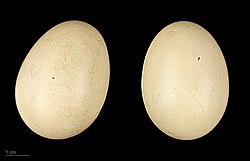| Silver teal | |
|---|---|
 | |
| A male in Brazil | |
| Scientific classification | |
| Kingdom: | Animalia |
| Phylum: | Chordata |
| Class: | Aves |
| Order: | Anseriformes |
| Family: | Anatidae |
| Genus: | Spatula |
| Species: | S. versicolor |
| Binomial name | |
| Spatula versicolor (Vieillot, 1816) | |
| Subspecies | |
| |
 | |
Non-Breeding Year-round Breeding | |
| Synonyms | |
Anas versicolorVieillot, 1816 | |

The silver teal or versicolor teal (Spatula versicolor) is a species of dabbling duck in the genus Spatula. It breeds in South America.
Contents
Between April and June they prefer reed beds and will lay 6 to 10 creamy-pink eggs. The eggs will hatch after 25 to 27 days. [2] As with swans and geese, both parents will rear the ducklings. [3] A pair may bond long term. It lives on fresh water in small groups, and feeds primarily on vegetable matter such as seeds and aquatic plants. [4] [ citation needed ] [5]
The silver teal's range includes southern Bolivia, southern Brazil, Paraguay, Argentina, Chile, Uruguay, South Georgia, South Sandwich Islands, [1] and the Falkland Islands. [6] The southernmost birds migrate to southern Brazil in the winter.
Silver teals are on the whole placid ducks but may be protective of eggs, young and females. [3]
